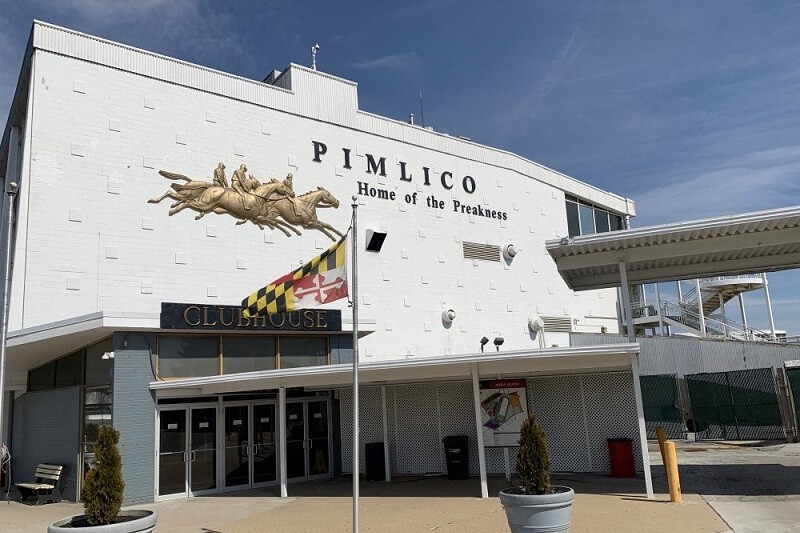Maryland Stadium Authority officials said they are watching rising costs and lottery funds earmarked to pay for the revitalization of Pimlico Race Track. File photo by Jay Cannon/Capital News Service
Questions were raised anew Monday about the ability of lottery funds to cover costs for the planned renovation of Pimlico Racetrack, which will be competing for funding with several other Maryland Stadium Authority projects.
Comptroller Brooke Lierman (D) asked Maryland Stadium Authority officials for details on its revenue projections and whether funding from the lottery can support hundreds of millions of dollars of bonds that will be needed for Pimlico, on top of projects at the two stadiums in Baltimore and the Blue Line Corridor project in Prince George’s County.
“I feel like last year, maybe your predecessor expressed some concern that the lottery wouldn’t cover it all,” Lierman said Monday during a meeting of the state’s Capital Debt Affordability Committee. “But it looks like you think that going forward, it will.”
Comptroller Brook Lierman (D). File photo by Bryan P. Sears.
Dawn Abshire, chief financial officer for the authority, said the ability to cover the projected debt depends on the project.
“Each project is kind of rated a little bit differently depending on the credits,” Abshire said. “Right now, we’re working on the Built to Learn which comes from the education program, and we have almost four times coverage for that, for the baseball bonds.”
Built to Learn is a law that allows the authority to sell bonds for school construction around the state and manage the projects.
“We haven’t really got into the coverage table or the planning for that. We’re just starting that now, but I know for when we did football last year, it had about the same type of coverage,” she said.
A Pimlico revitalization plan passed this year by the legislature is supposed to save the storied horse racing venue and its signature race, the Preakness Stakes, and help revitalize the surrounding community.
In May, the Board of Public Works, chaired by Gov. Wes Moore (D), approved a five-part master agreement that positioned the state to take ownership of the racecourse and exclusively license the Preakness Stakes. Under the agreement, the nonprofit created by the state would assume control of thoroughbred racing in Maryland as 1/ST Racing, owned by the Stronach Group, effectively exits operations in Maryland.
The legislature earlier this year created a nonprofit to take over horse racing in Maryland, which included a long-stalled revitalization of the Pimlico track. The Maryland Stadium Authority would issue $400 million in bonds to pay for the facility and related projects.
The bonds will be repaid through two funds dedicated to improvements to both the track and surrounding neighborhoods. The repayment would be supplemented by increased contributions from slot machine revenues collected by the Maryland Lottery and Gaming Control Agency as well as some funds earmarked for two other racetracks.
The first bonds are expected to be issued in May 2025.
“I’m just curious if we’re bumping up against how much we’re actually bringing in through the lottery or if we have room to spare,” Lierman asked.
“Well, there are some concerns, especially as we get into the racing,” Abshire said, adding “the project costs are getting a little higher, and as that falls in the waterfall, maybe we need to be cognizant of the lottery coverage as we get further down the waterfall.”
“Towards Pimlico,” Lierman said. “Because that’s at the end of the waterfall right now.”
“Correct,” said Abshire.
Concerns about the cost of the project and the ability of lottery funds to cover the costs are not new.
Legislative analysts warned in March that the lottery funding would not cover debt service on the bonds.
Senate President Bill Ferguson said at the time that while the state needed to save Pimlico, and by extension the state’s horse industry, a rescue plan “doesn’t come with a blank check.”
“We support the industry a lot and we should,” Ferguson said at the time. “There’s lots of public policy reasons why this is an important industry for the state of Maryland. But everything has a limit.”

